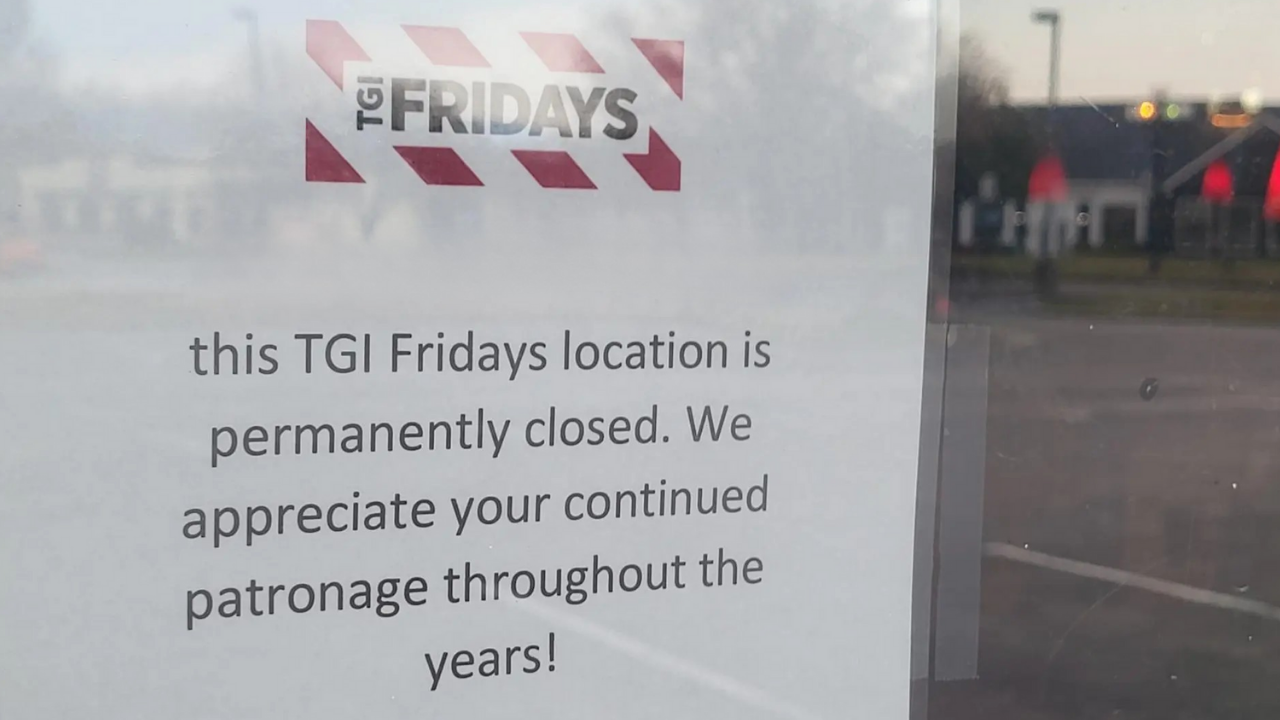
In a dramatic turn for American casual dining, TGI Fridays has shuttered 71% of its U.S. restaurants, erasing an estimated $477 million in annual revenue and sending shockwaves through communities, employees, and the broader hospitality industry. The closures, announced alongside a Chapter 11 bankruptcy filing in November 2024, mark one of the largest contractions in the sector’s recent history. Executive Chairman Rohit Manocha described the move as an opportunity for “an optimized corporate infrastructure,” but the scale of disruption reveals deeper structural challenges.
The Numbers Behind the Decline

TGI Fridays’ U.S. footprint shrank from 270 locations in January 2024 to just 79 by November 2025, with 191 restaurants closed in less than two years. At its peak in 2008, the chain boasted 601 U.S. restaurants generating $2 billion in revenue. By 2023, that number had dropped to 233 locations with approximately $700 million in U.S. revenue. The latest contraction leaves only 79 units—a decline of approximately 88% from the chain’s 2008 peak.
The bankruptcy filing, completed in November 2024, cited COVID-19 financial challenges, capital restructuring needs, and the loss of UK royalty streams, with assets and liabilities estimated between $100-500 million. Despite legal protections, closures accelerated, dropping the number of locations from 161 at filing to 79 within a year. The pace of decline averaged approximately 17 closures per month, with some states, like Missouri, losing all remaining restaurants in a matter of days.
Ripple Effects on Workers and Communities

The immediate fallout has been felt most acutely by the chain’s workforce. An estimated 4,775 to 6,876 restaurant jobs have been displaced nationwide, affecting servers, cooks, bartenders, and managers. Many employees learned of their fate through abrupt social media posts or closure signs, leaving little time to prepare for unemployment. The impact mirrors similar contractions abroad, with 35 closures in the UK resulting in over 1,000 lost jobs.
Missouri offers a stark example: the state’s last two TGI Fridays closed within days of each other in November 2025, erasing the brand’s presence entirely. This pattern has repeated across the country, as 191 restaurants in multiple states closed between January 2024 and November 2025. Locations now remain in only 19 states, with Maryland, Pennsylvania, and Florida accounting for a significant portion of remaining units. For many neighborhoods, the closures mean the loss of familiar gathering spots and a shift in local dining culture.
Franchisees, Landlords, and Supply Chains Face Uncertainty

The bankruptcy filing has left franchise owners in limbo, grappling with declining consumer confidence and diminished corporate support. Decisions about whether to continue operations have become fraught, as the risk of further closures looms. The collapse of company-owned locations has exposed the fragility of the casual dining model, with franchisees navigating an unpredictable business environment.
Landlords, too, are absorbing the shock. The mass closure of company-operated locations has left significant amounts of restaurant real estate vacant, much of it in strip malls and suburban centers. The specialized nature of these spaces—large footprints and built-in kitchens—makes re-leasing difficult, compounding financial losses for property owners and reflecting broader economic consequences.
The effects extend beyond direct stakeholders. Food distributors, beverage suppliers, equipment services, and uniform companies have experienced substantial losses in business as longstanding contracts evaporate. The collapse of TGI Fridays demonstrates how the failure of a single chain can ripple through an entire ecosystem, disrupting supply relationships and creating immediate financial pressure for vendors.
Structural Causes and Shifting Consumer Preferences
Multiple factors contributed to the collapse. The pandemic intensified existing vulnerabilities, including labor shortages, supply chain disruptions, and a business model heavily reliant on dine-in traffic. Sales fell 15% year-over-year before bankruptcy, and the loss of UK royalties further strained finances.
Changing consumer behavior also played a role. Younger diners increasingly favor local, authentic experiences or fast-casual options, viewing traditional chains as expensive and outdated. Social media has amplified demand for “Instagrammable” meals, leaving legacy brands struggling to adapt. These trends suggest that surviving TGI Fridays locations face significant challenges in remaining relevant.
Looking Ahead: Uncertain Future for an Iconic Brand

With only 79 U.S. locations remaining and no clear path to stabilization, the future of TGI Fridays is uncertain. Thousands of workers have lost their jobs, and 19 states are now without a single restaurant. The promise of an “optimized corporate infrastructure” has yet to materialize, raising questions about whether the chain can recover or will join the ranks of extinct American brands. As communities, franchisees, and industry partners adjust to the new landscape, the fate of TGI Fridays will serve as a bellwether for the resilience of casual dining in a rapidly changing market.